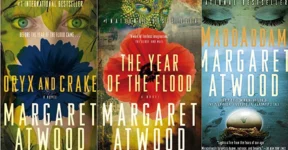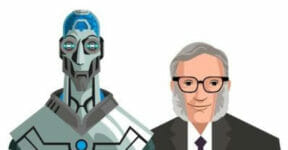Margaret Atwood once described her novel Oryx and Crake, the first in the MaddAddam trilogy, as speculative fiction instead of pure sci-fi because the theme dealt with technologies humans could theoretically use but have not yet experimented with. It is a dystopian novel that focuses mainly on the potential scenario of overpopulation followed by the genetic engineering of humans as a proposed solution. As disastrous as it might be, readers learn in the series that genetic modification is a theoretical answer but with catastrophic consequences.
Short Summary
The plotline does not follow a linear progression, and the facts are not outlined in sequence from the beginning. The Oryx and Crake novel delivers the story using both present-day and flashback perspectives, requiring readers to assemble the pieces together chapter by chapter. It is narrated mostly by Snowman a.k.a. Jimmy.

Snowman delivers the first part of the storyline, describing his exploits in the aftermath of an apocalyptic event where the “normal” human population has been almost entirely eradicated. A deadly plague struck hard, rendering men and women infertile. Society anywhere quickly fell into chaos and billions of people died as a result. Much of the world is now populated by genetically manipulated creatures known as the Crakers. Although physically the Crakers resemble humans in many respects, they are devoid of the desire for love and only engage in seasonal sexual activities for the purpose of reproduction. Snowman is one of the few remaining humans responsible for watching over the new breed. During an interaction with some Crakers, who regard him as a role-model or teacher, he shares stories of his past.
Jimmy’s perspective makes up the majority of the second storyline. He is Snowman before the catastrophe. Flashbacks to days gone by describe his relationship with Crake, the mad scientist and mastermind of the apocalypse, and how they fell for the same girl named Oryx. The three of them had a long story from their times as children to adulthood and eventually the destruction of humanity. Jimmy was inadvertently involved in spreading the plague on behalf of Crake.
Main Characters
There are only four major characters in the novel, including:
- Snowman (Jimmy): after the near-total collapse of the human population, Jimmy calls himself Snowman. According to Crake, who created the deadly plague, Snowman is immune to the virus. When all people worldwide died and were replaced with Crakers, he is still alive but without much purpose. Jimmy thinks as if he is melting into nothing, hence the new name. He has never encountered another human in the present-day post-apocalyptic wasteland, until the last few pages of the novel.
- Crake (Glenn): a genetic engineer and childhood friend of Jimmy’s. With the combination of a brilliant mind and an extreme view toward humanity, Crake came up with a plan to eradicate the population and replace humans with humanoids of his own creation. His evil scheme is the main story, told from Jimmy’s viewpoint. When Jimmy shares stories of the past with the Crakers, he says Crake is their god.
- Oryx: as youths, Jimmy and Glenn frequented websites that showcased explicit content such as suicides, executions, and child pornography. They became obsessed with a female child porn performer known as Oryx. As an adult, she had intimate relationships with both Glenn and Jimmy. During the days of the apocalypse, Glenn killed Oryx and Jimmy killed Glenn.
- Crakers: the humanoids invented by Crake are simply known as Crakers. According to their creator, the creatures possess all the good traits of humans and are devoid of the tendency to destroy things. They can reproduce, but each Craker can only live to 30 years of age. Even if they appear healthy, they drop dead when their time comes. Their children can grow more rapidly than normal humans.
In Crake’s final moments, he asked Jimmy to take care of the humanoids and teach them everything. Jimmy is a teacher and guardian to all Crakers.
Quotes
Much like in other Margaret Atwood novels, readers will find many interesting quotes about dystopian worlds and humanity in general. Several of the most memorable lines from Oryx and Crake are as follows:
| “If he wants to be an asshole, it’s a free country. Millions before him have made the same life choice.” |
| “Nature is to zoos as God is to churches.” |
| “How much needless despair has been caused by a series of biological mismatches, a misalignment of the hormones and pheromones? Resulting in the fact that the one you love so passionately won’t or can’t love you. As a species we’re pathetic in that way: imperfectly monogamous. If we could only pair-bond for life, like gibbons, or else opt for total guilt-free promiscuity, there’d be no more sexual torment. Better plan – make it cyclical and also inevitable, as in the other mammals. You’d never want someone you couldn’t have.” |
| “Falling in love, although it resulted in altered body chemistry and was therefore real, was a hormonally induced delusional state, according to him. In addition, it was humiliating, because it put you at a disadvantage, it gave the love object too much power. As for sex per se, it lacked both challenge and novelty, and was on the whole a deeply imperfect solution to the problem of intergenerational genetic transfer.” |
| “Men can imagine their own deaths, they can see them coming, and the mere thought of impending death acts like an aphrodisiac. A dog or rabbit doesn’t behave like that. Take birds — in a lean season they cut down on the eggs, or they won’t mate at all. They put their energy into staying alive themselves until times get better. But human beings hope they can stick their souls into someone else, some new version of themselves, and live on forever.” |
In 2003, Oryx and Crake novel was shortlisted for the Booker Prize for Fiction. It was also nominated for the 2004 Orange Prize for Fiction. It did not win anything. In November 2019, BBC News included Oryx and Crake in the list of 100 Most Inspiring Novels.
We think that the main message of Oryx and Crake is about the danger of giving too much power to big corporations and the scientists behind them. That said, the novel also offers interesting views on the threat of overpopulation, the future of AI, and the role of humans in a world populated by robotic creatures. The story progression—with some extensive flashbacks—can be quite challenging, although there is never a sense that the novel sacrifices its forward momentum.
Have you read the novel? Do you think it is too complicated or perhaps an overly simplified work by Atwood? Let us know. We’d love to hear from you.
Other things you might want to know.
Are there any other dystopian novels by Margaret Atwood?
All the novels in the MaddAddam trilogy can be categorized as dystopian. In addition to Oryx and Crake, the series also has The Year of the Flood and MaddAddam. However, Atwood’s most popular take on the dystopian subgenre is The Handmaid’s Tale.
What about dystopian novels by other authors?
Dystopian worlds are a popular genre. There have been plenty of critically acclaimed novels in the category. Among the highly recommended ones include:
- Nineteen Eighty-Four by George Orwell
- The Road by Cormac McCarthy
- Station Eleven by Emily St. John Mendel
- Parable of the Sower by Octavia E. Butler
- A Clockwork Orange by Anthony Burgess
What exactly is “dystopian” fiction?
A major characteristic of dystopian fiction is that the story is set against the backdrop of an imaginary future world where injustices and misery run rampant. Life is unbearably difficult due to deprivation of resources, terror, or oppression.
If you want more on the MaddAddam Trilogy, then find out here!
Check out other articles by month:







